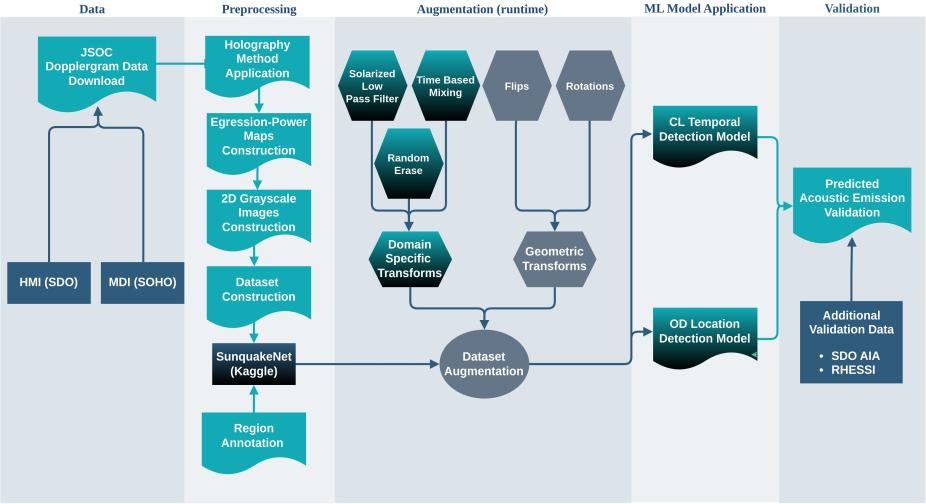Sunquakes are seismic emissions visible on the solar surface, sometimes associated with solar flares. Despite the availability of several manual detection guidelines, to our knowledge, the astrophysical data produced for sunquakes is new to the field ofMachineLearning.
We introduce an acoustic holography processed dataset constructed from egression-power maps of solar active regions for Solar Cycles 23 and 24. We then present a pedagogical approach to the application of machine learning representation methods for sunquake detection using AutoEncoders, Contrastive Learning, Object Detection and recurrent techniques, which we enhance by introducing several custom domain-specific data augmentation transformations.
With our trained models, we find temporal and spatial locations of peculiar acoustic emission and associate them to eruptive and high energy emission in two C1 class flares. While noting that models are still in a prototype stage and there is much room for improvement, we hypothesize that these have potential to first enable routine detection of weak solar acoustic manifestations.

Process diagram of proposed solution. The gray-labeled augmentations represent standard ML approaches, while the others depict custom transforms that were found by us to improve our sunquake prediction model.